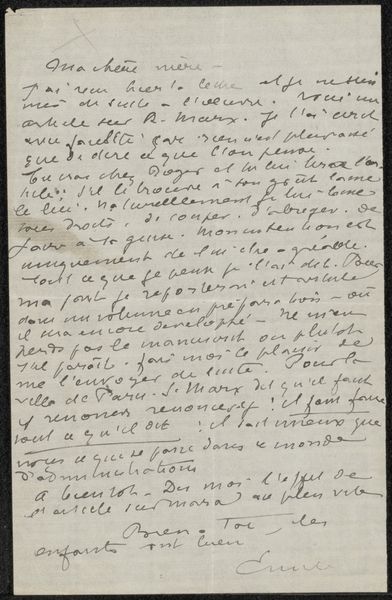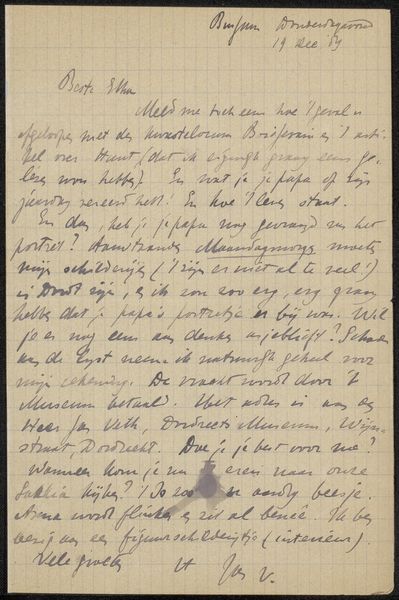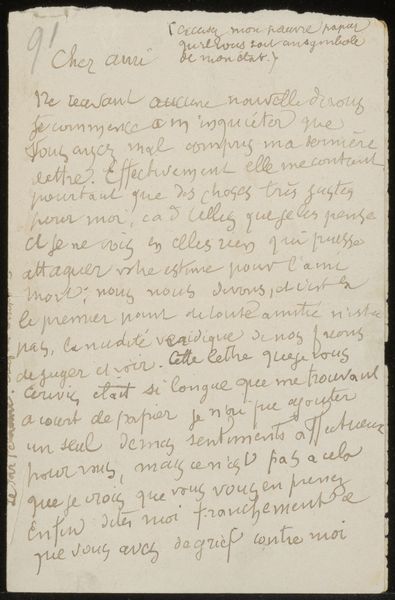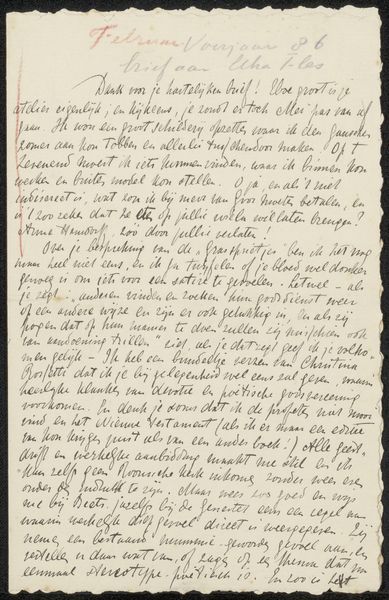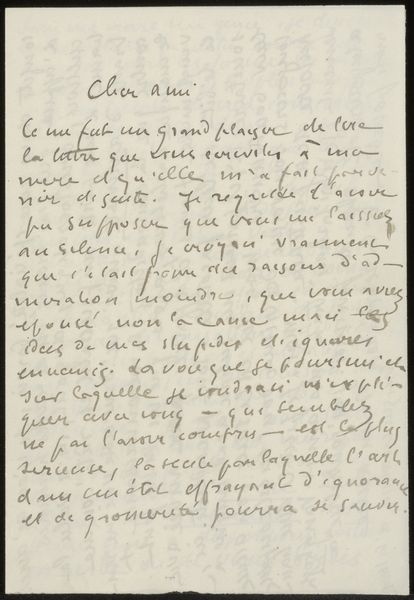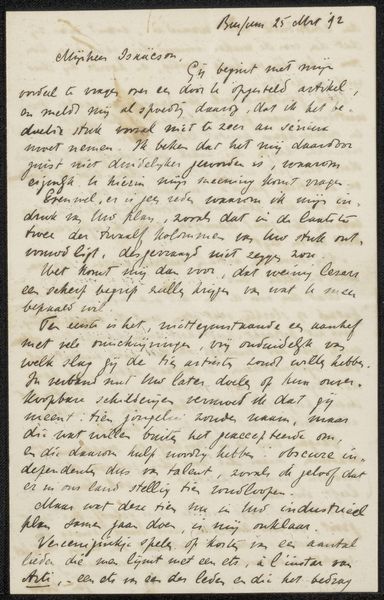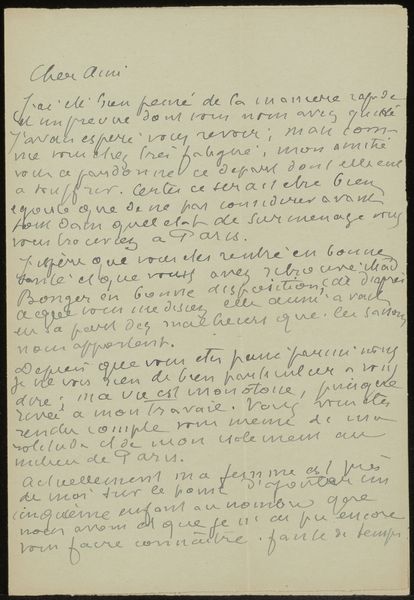
paper, typography, ink
#
paper
#
typography
#
ink
#
calligraphy
Copyright: Rijks Museum: Open Domain
Curator: In Emile Bernard's "Letter to Andries Bonger," dating from before 1920, we see an intimate correspondence rendered in ink on paper. Editor: It feels so personal, almost like eavesdropping. The calligraphy gives it an artistic touch. How do you interpret this piece beyond its obvious function as a letter? Curator: The letterform itself speaks volumes. The slant, the pressure of the ink—these elements, considered psychologically, convey the emotions of the author as much as the words do. Editor: That's interesting. I mostly just see elegant handwriting, but I guess there’s more. Is there any cultural significance? Curator: Letters held significant cultural weight, embodying both communication and artistic expression. Think of illuminated manuscripts, where the text wasn't just information, but also art. This reflects a cultural memory where handwritten communication was a craft, an extension of the self. Editor: So, you're saying the act of writing, the performance of it, becomes important? Curator: Precisely. And consider the intended recipient—Bonger—a conduit for Bernard's ideas and experiences. It speaks to their shared intellectual landscape and a cultural exchange preserved through symbols and strokes. What emotional weight do you feel from this, knowing it was penned with a specific reader in mind? Editor: It’s amazing to consider how much can be gleaned from something as seemingly simple as a letter. I definitely see it differently now. Curator: Indeed. Even mundane correspondence can unlock cultural memory and individual stories.
Comments
No comments
Be the first to comment and join the conversation on the ultimate creative platform.

